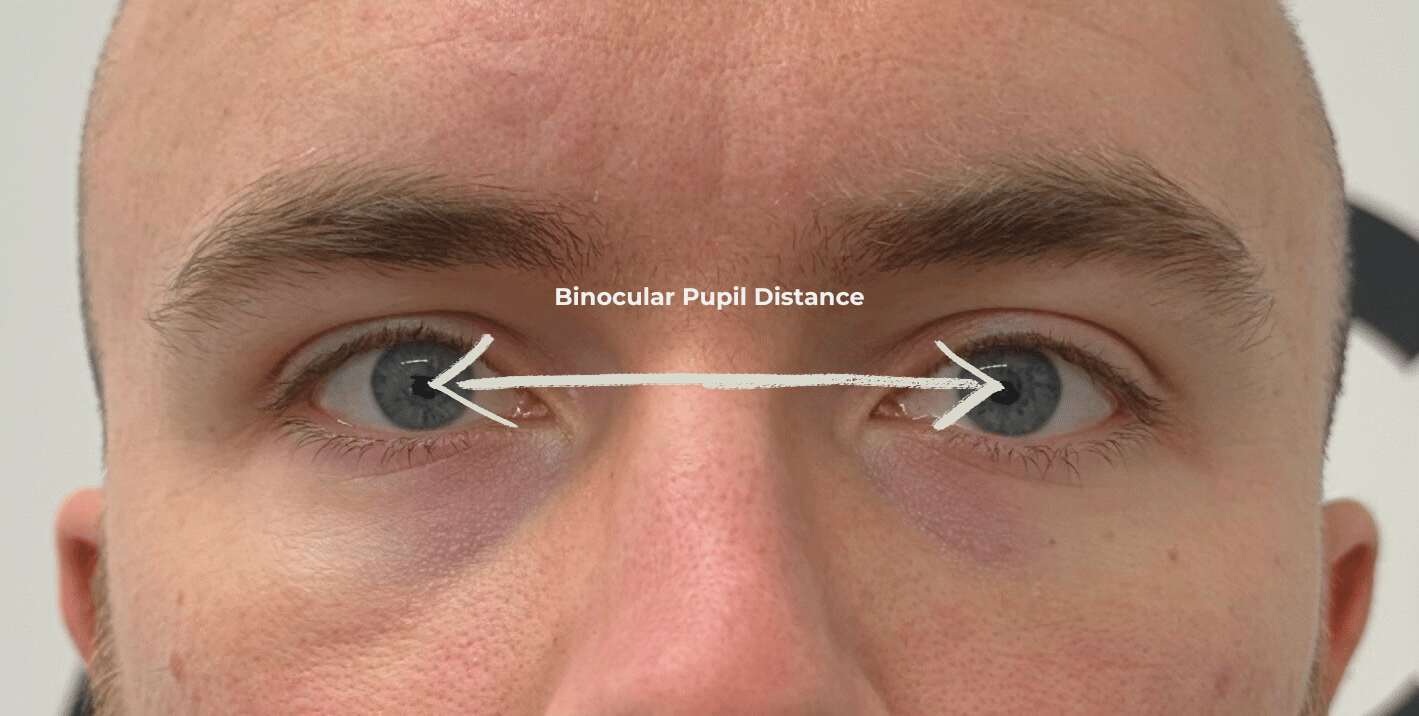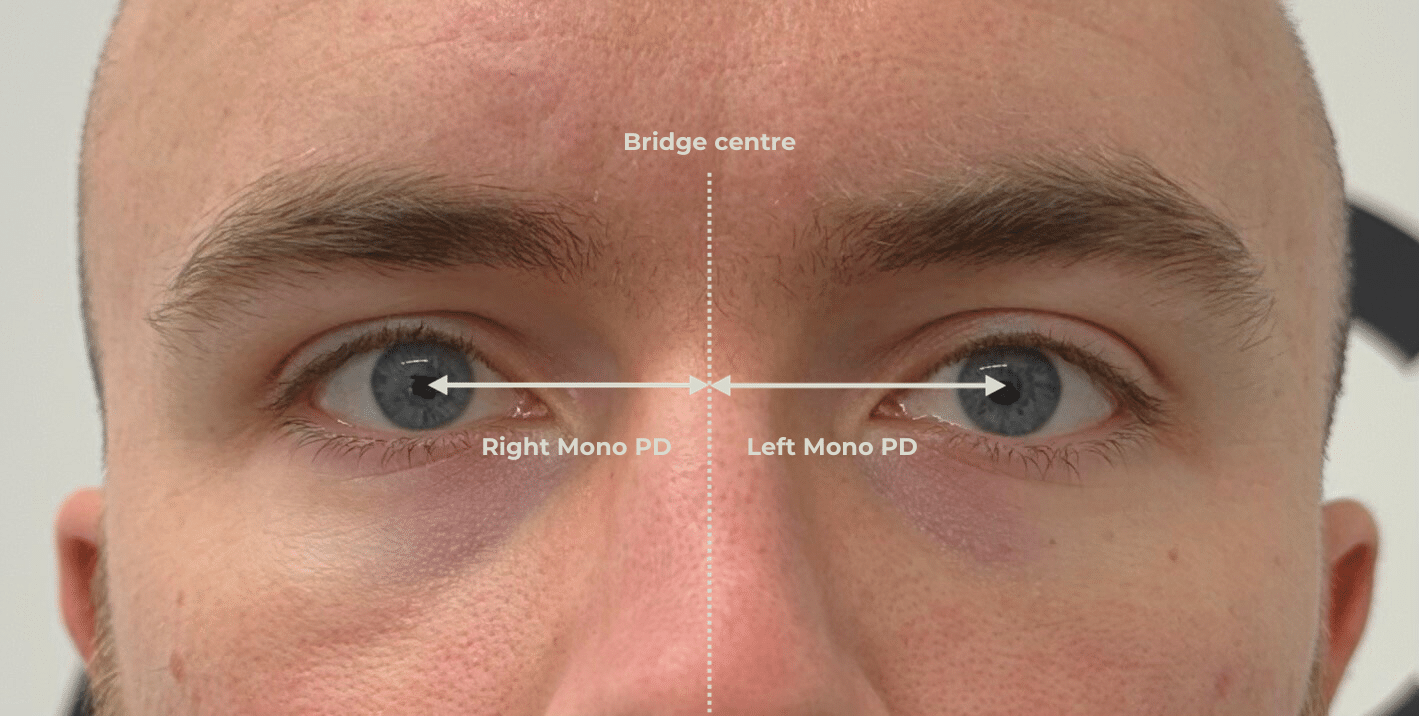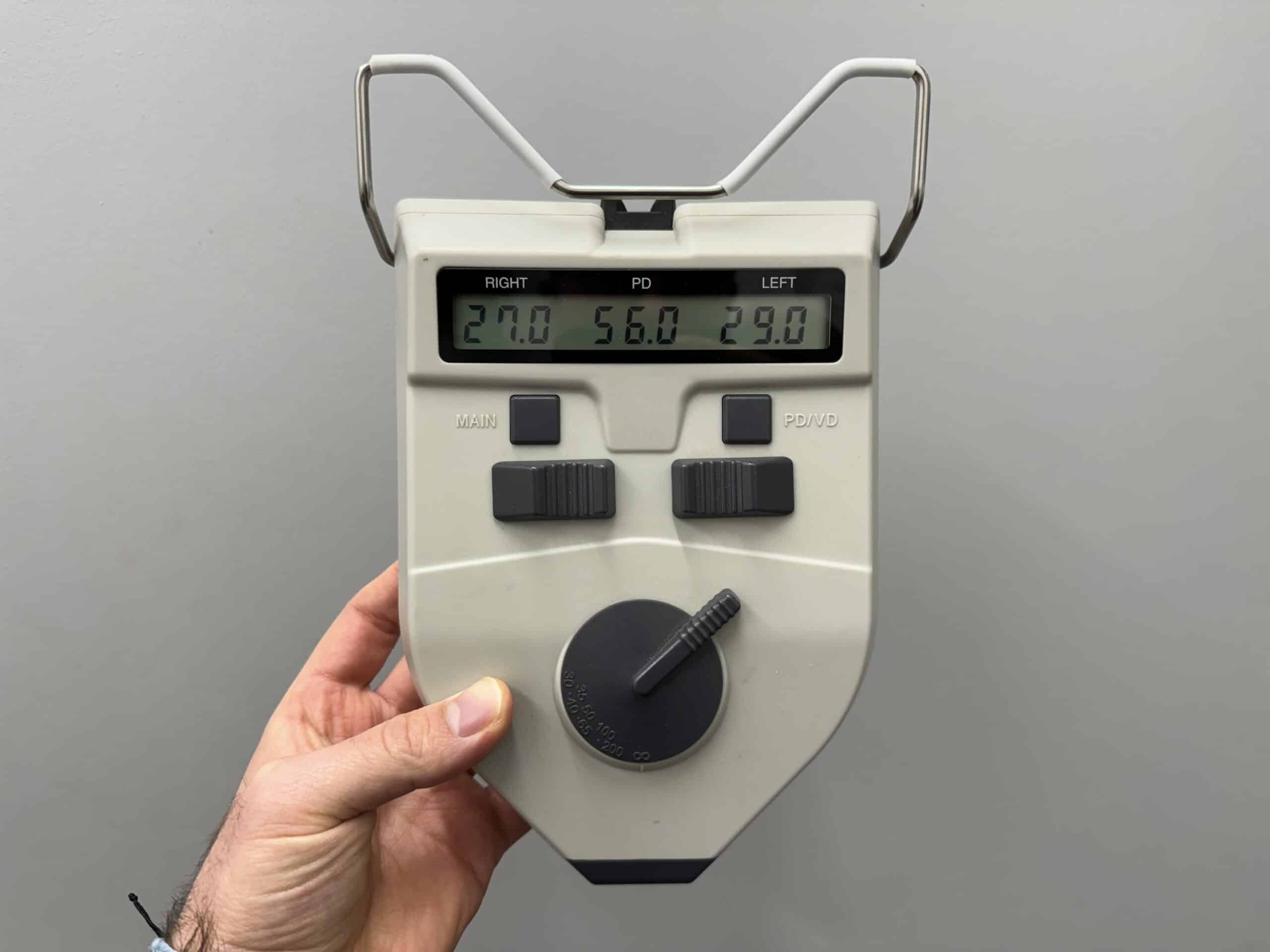11-01-24 By: Michael Stent
What is a PD? Ace Eyewear
PD is short for Pupillary Distance.
Pupillary Distance is the distance between the centre of your pupils and is measured in mm. The pupil distance ensures that your pupils align perfectly with the optical centre of your spectacle lenses to give you the clearest, sharpest possible vision.
What is the difference between Binocular PD and Monocular PD?
Binocular PD is the measurement of the total distance between your two pupils usually for adults this is around 60mm.

Monocular PD is when your left and right pupil distance are measured separately this is done by measuring from the centre of a person’s bridge (nose) to their left or right pupil centre.

Your optician should measure both your Monocular Pupil Distance along with vertical fitting heights to ensure that your new prescription lenses are as accurate as possible.
Near and Far Pupil Distance
Did you know that you don’t just have one pupil distance? Your pupil distance will change depending on whether you are looking into the distance, your computer screen or a book.
This is because your eyes converge when looking at objects closer to you therefore narrowing your pupil distance.
Why is pupil distance so important?
Measuring a monocular pupil distance is important to ensure the clearest vision from your spectacle lenses. Monocular pupil distances are recommended because it is very uncommon for people to have a symmetrical face.
When fitting glasses this means that a person is more than likely to have a different monocular PD measurement for their left and right eye.
This means for example if a person’s glasses are ordered using their Binocular Pupil distance of 64, the lab technician making the glasses will split this into a monocular PD of 32 in both the left and the right eye.
However, as only 2% of the population are facially symmetrical this is likely to not be accurate for that patient. A person with a Binocular PD of 64mm could have monocular PDs of 31mm in their right eye and 33mm in their left eye or alternatively 34mm in their right eye and 30mm in their left eye.
This will cause the customer’s pupil and the optical centre of the lens to not align which will induce prism which has not been prescribed. The higher your prescription the larger the amount of prism that will be induced.
What is the average pupil distance?
Although it would be very hard to give an accurate average pupil distance we can however say the majority of men will have a pupil distance between 60 and 64, and ladies between 57 and 60.
As children grow they will not only become more shortsighted but also their pupil distance will likely increase along with it. That is why it is important for the optician to measure their monocular pupil distance every time a child has new glasses.

How to measure PD distance
To ensure that your pupil distance is measured accurately we recommend visiting our store in Wimbledon Village where our qualified dispensing opticians can measure this for you.
Your pupil distance can be measured using a number of different tools including a PD ruler, Pupilometer or a tailormade iPad application provided by our lens suppliers.



